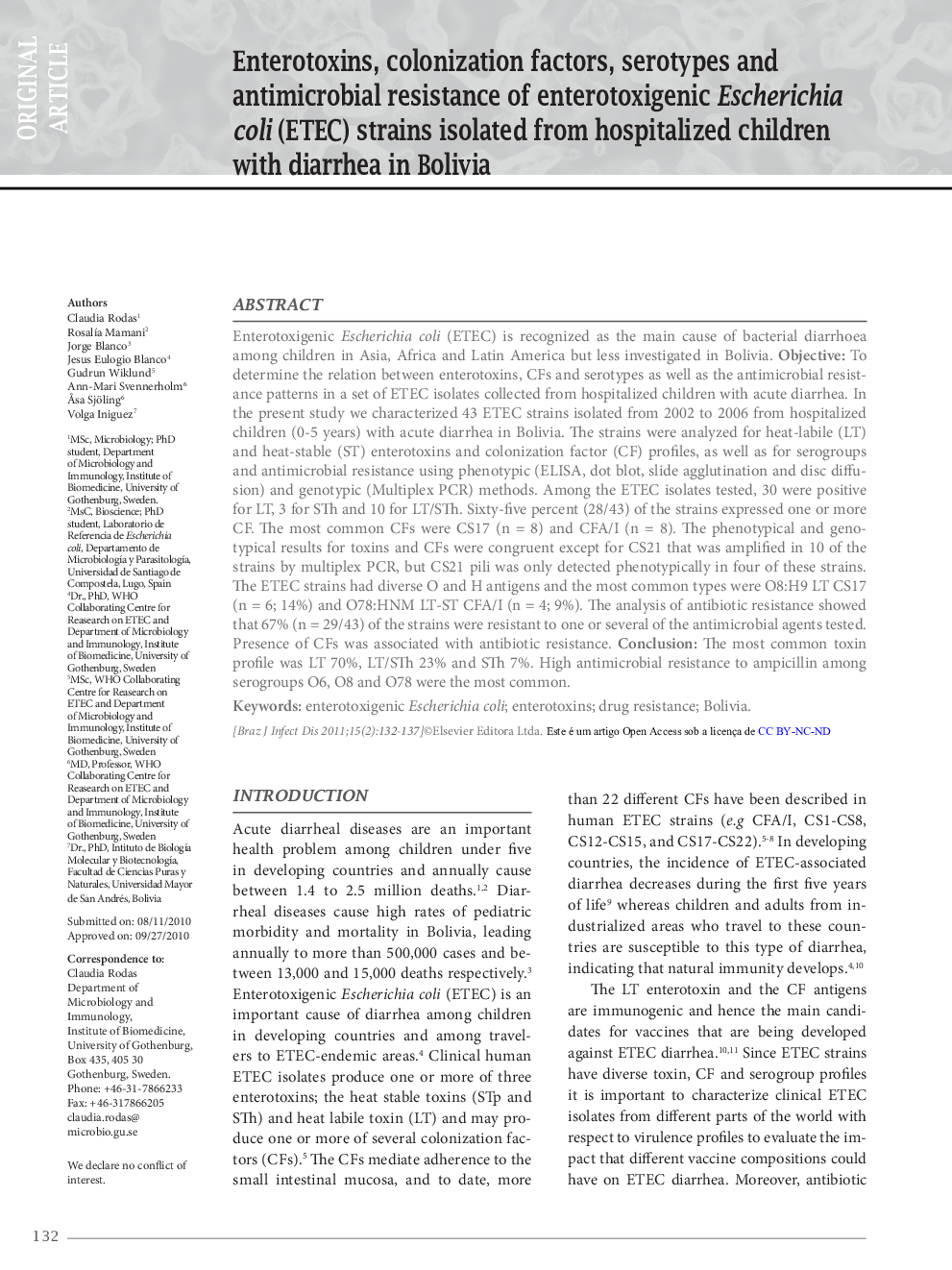| کد مقاله | کد نشریه | سال انتشار | مقاله انگلیسی | نسخه تمام متن |
|---|---|---|---|---|
| 3344587 | 1591215 | 2011 | 6 صفحه PDF | دانلود رایگان |

Enterotoxigenic Escherichia coli (ETEC) is recognized as the main cause of bacterial diarrhoea among children in Asia, Africa and Latin America but less investigated in Bolivia. Objective: To determine the relation between enterotoxins, CFs and serotypes as well as the antimicrobial resistance patterns in a set of ETEC isolates collected from hospitalized children with acute diarrhea. In the present study we characterized 43 ETEC strains isolated from 2002 to 2006 from hospitalized children (0–5 years) with acute diarrhea in Bolivia. The strains were analyzed for heat-labile (LT) and heat-stable (ST) enterotoxins and colonization factor (CF) profiles, as well as for serogroups and antimicrobial resistance using phenotypic (ELISA, dot blot, slide agglutination and disc diffusion) and genotypic (Multiplex PCR) methods. Among the ETEC isolates tested, 30 were positive for LT, 3 for STh and 10 for LT/STh. Sixty-five percent (28/43) of the strains expressed one or more CF. The most common CFs were CS17 (n = 8) and CFA/I (n = 8). The phenotypical and genotypical results for toxins and CFs were congruent except for CS21 that was amplified in 10 of the strains by multiplex PCR, but CS21 pili was only detected phenotypically in four of these strains. The ETEC strains had diverse O and H antigens and the most common types were O8:H9 LT CS17 (n = 6; 14%) and O78:HNM LT-ST CFA/I (n = 4; 9%). The analysis of antibiotic resistance showed that 67% (n = 29/43) of the strains were resistant to one or several of the antimicrobial agents tested. Presence of CFs was associated with antibiotic resistance. Conclusion: The most common toxin profile was LT 70%, LT/STh 23% and STh 7%. High antimicrobial resistance to ampicillin among serogroups O6, O8 and O78 were the most common.
Journal: The Brazilian Journal of Infectious Diseases - Volume 15, Issue 2, March–April 2011, Pages 132-137